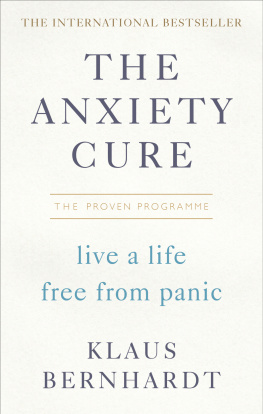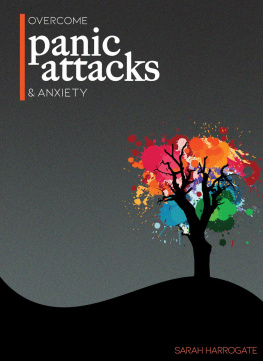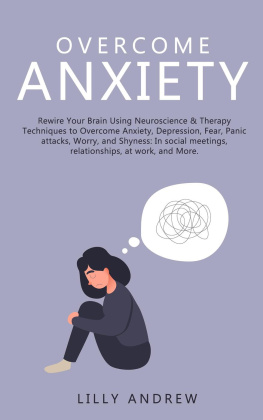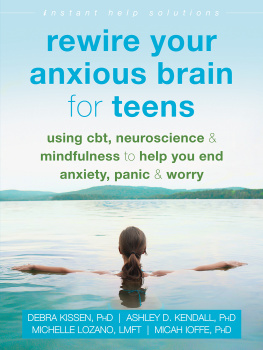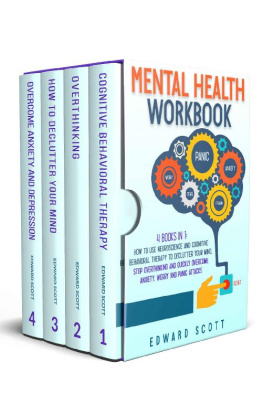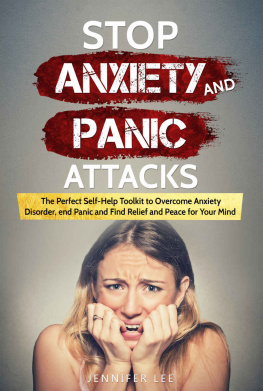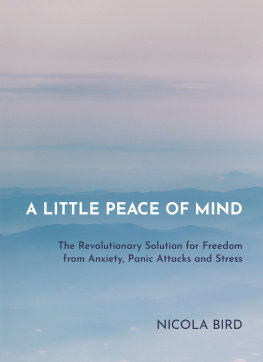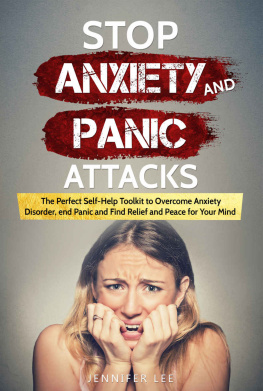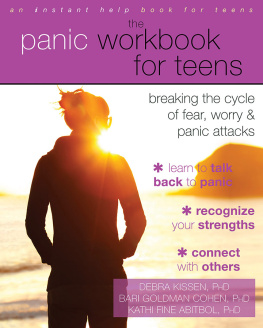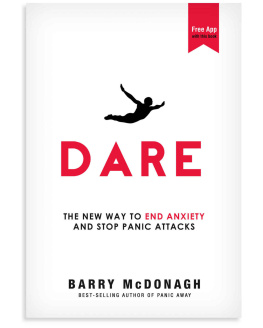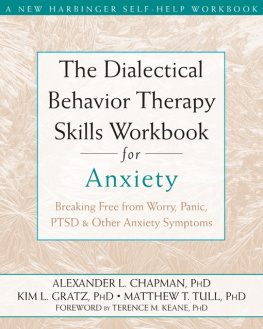CONTENTS
ABOUT THE BOOK
Whether you suffer from panic attacks or general anxiety, Klaus Bernhardts proven anxiety cure will help you lead a calmer, happier life fast.
Drawing on the very latest therapies and research in neuroscience The Anxiety Cure explains how to master tried-and-tested mind training and pattern breaker techniques. Discover:
- The real cause of your anxiety
- Tools to instantly stop anxiety in its tracks
- How to reverse anxiety-inducing thoughts
Klaus Bernhardts practical and easy-to-action book is your chance to move from a place of worry and uncertainty to confidence and control, all in just a few weeks!
ABOUT THE AUTHOR
KLAUS BERNHARDT worked for years as a science and medical journalist before two of his friends started to suffer from anxiety and asked him for help. He immersed himself in anxiety research, trained to become a complementary psychotherapist and developed his own treatment methods with staggering success rates. Klaus Bernhardt runs a psychotherapy clinic in Berlin that specialises in treating anxiety disorders, and is a member of the Akademie fr neurowissenschaftliches Bildungsmanagement (AFNB) and the Initiative Neues Lernen e.V. (INL).
www.the-anxiety-cure.com
PREFACE
IN THE UK , more than 11 million people have been diagnosed with anxiety disorders. Almost two million of them suffer from constantly recurring panic attacks. More than anything else, they would love to live a normal life again as soon as possible: a life free from fear of fear.
Many years ago my experiences in the field led me to decide to do everything in my power to help people suffering from panic attacks faster and more comprehensively than previously possible. In our Berlin clinic, where we specialise in the treatment of anxiety dis-orders, my wife and I use a completely new methodology for treating anxiety, one derived from modern neuroscience. Our methods have little in common with the usual treatments anxiety patients have come to expect. At our clinic there is no exposure therapy, no breathing exercises, no progressive muscle relaxation and no digging around in childhood memories. With very few exceptions we also strictly reject the use of antidepressants and tranquillisers. When we are asked just why our form of therapy is so radically different from that of most of our colleagues, I like to quote Albert Einstein: The definition of insanity is doing the same thing over and over and expecting different results.
Regrettably, this clever quote perfectly describes much of the manner in which anxiety patients are currently treated. The same therapies are turned to again and again, despite their painful slowness in producing results if they even help at all. At the same time, it appears that ground-breaking developments in neuroscience are being ignored. Instead of taking these new findings on board to finally establish better therapeutic standards, antidepressants continue to be prescribed and methods are still being used that in many cases have barely evolved in decades. Yet in the last 20 years, our understanding of the brain and how it works has been transformed. Thanks to imaging technology we can watch our grey cells think. We can test which thoughts and mental exercises produce which reactions, and thanks to the Internet, experts can keep in contact and up to date worldwide.
Thanks to these developments, we now have a very good understanding of what has to happen in the brain to make panic attacks possible, and we also know what can be to done to stop anxiety in its tracks. All of the techniques described in this book have undergone years of testing and refinement in our clinic. You may find it hard to imagine, but we are now at a point where 70 per cent of our patients need fewer than six sessions to be completely freed of their panic attacks.
Of course, a book can and should never replace an experienced doctor or therapist. But this book can still help you understand what really causes your panic attacks. You will also get to know a series of exciting and simple to learn techniques that have already helped many of our patients to live a life free from anxiety and panic.
I sincerely hope that the following chapters will help you to achieve that life as quickly as possible.
Yours
Klaus Bernhardt
Science and medical journalist, registered alternative psychotherapist and member of the Academy for Neuroscientific Education Management AFNB
1
PANIC ATTACKS: WHAT CAUSES THEM?
ANXIETY IN GENERAL and that includes panic attacks is, first of all, our bodys perfectly healthy and appropriate reaction to danger. For fear has only one job: to protect us. For example, if a hungry lion were to leap out of the brush directly in front of you, your body would immediately start producing adrenaline, your heart rate would go through the roof and within milliseconds you would decide whether you were prepared to fight ill-advised, perhaps, with a lion sizing up its dinner or flee. This is a completely normal and necessary reaction, which ensures our survival.
But what happens when there is no lion waiting to pounce? When your heart starts racing seemingly for no reason at all, when you feel like you are losing control or even going crazy, when for no apparent reason you suffer symptoms including dizziness, numbness, shortness of breath and nausea?
What exactly is happening in your brain, and why is it reacting the way it is? Well, there are basically four different causes, and I will devote a chapter to each cause. You can help yourself to recover more quickly by reading these chapters without skipping any of them, because panic attacks often have more than just the one cause. Only once you know all the causes, and are able to use the appropriate technique to deal with each one, will you be able to take charge of your anxiety quickly and sustainably.
Heres a short overview of the four most common causes of panic attacks.
Ignoring the warning signs
If there is one thing that I have learned from my years of clinical work, it is that ignoring warning signs is usually what triggers the initial occurrence of panic attacks.
But what exactly are these warning signs? Mostly, it starts when you have ignored your gut for far too long. Gut instinct is the voice of your unconscious. And the more often you use your conscious brain to come up with yet another argument as to why you cant listen to your gut, the louder your discontented unconscious will make itself heard. With the help of an eclectic variety of warning signals, which can be both mental and physical in nature, your unconscious seeks to get you to change something about your life that has long since stopped doing you good.
The mental warning signs include sudden forgetfulness and difficulty concentrating, lack of motivation, exhaustion and feeling sad for no apparent reason. A panic attack, incidentally, is the final stage and hence the strongest of the mental warning signs.
Among the physical warning signs are stomach and digestion problems, sudden problems with vision, rashes and other skin disorders, involuntary muscle twitching (tics), as well as increased urinary frequency. Even slipped discs and shingles have been shown to be often psychosomatic in nature, and therefore count among these warning signs. How this all connects together, and what you can do about it to save your psyche all this unpleasantness, is dealt with in detail in .

